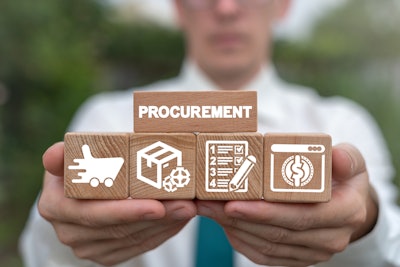
The pressure to limit our carbon footprint has become a competitive differentiator for modern organizations. Sustainability, no longer is a “nice-to-have,” as regulators and consumers demand more focused commitments to Net Zero. While the efforts to minimize emissions are bigger than one person, procurement leaders have a unique opportunity to influence the impact of their organizations on the environment on a large scale. Data is making that possible – and changing the narrative.
Facing the challenge
Greenhouse gas emissions (GHG) are categorized by scope: direct (Scope 1) and indirect (Scopes 2 and 3). Scope 3 focuses on the organization’s supply chain.
With little visibility into their suppliers’ processes and only into reported GHG impacts, Scope 3 emissions are one of the more challenging areas for organizations to quantify. Yet they account for five-and-a-half times1 the emissions of Scopes 1 and 2 combined.
Clearly, Scope 3 emissions is an area with room for significant improvement. And with more than 40 percent attributed to purchased goods and services,1 it is why many consulting firms are pointing to procurement to act as a change-agent. But rallying cries to limit consumption, leverage buying power to influence suppliers’ commitments to Net Zero, and vague prescriptive solutions that call for strong leadership and collaboration soon fade to whispers as procurement struggles to implement them.
Can procurement, a role that traditionally has been tasked with negotiating optimal pricing contracts and mitigating supply chain risk for the business, make this shift? The short answer is yes.
Disrupting the procurement process
Consumption generally is approached with a scarcity mindset. Buying behavior is geared toward making sure we have sufficient resources on hand.
Cutting back on consumption subconsciously (and negatively) implies a change to our quality of life or how we operate as a business. Thus, purchasing decisions become emotional decisions, fueled by business models designed to sell more widgets.
But emotional decisions lack important perspective – the ongoing environmental and operational impacts of their purchases.
Consider all of the resource-intensive electrical “widgets” across an enterprise. Not only do these assets consume energy in their daily use, they often require additional resources for ongoing maintenance and operation. Upstream, their manufacture consumed many non-renewable resources and energy. Downstream, their disposal will have energy and environmental impacts. A record 53.6 million metric tons of electronic waste was generated worldwide in 2019, up 21 percent in just five years, according to the UN’s collaborative Global E-waste Monitor 2020.2 The report also predicts global e-waste – discarded products with a battery or plug – will reach 74 Mt by 2030, almost a doubling of e-waste in just 16 years.2
The data blind spots that exist around the utilization, location, and condition of these resource-intensive assets, though, can now be monitored easily – using simple IoT technologies such as the smart plug.
By adding context to this data from existing ERP, CMMS, and other enterprise systems, procurement teams can now make more data-driven decisions that take into account an asset’s total cost-of-ownership – as well as its impacts on emissions.
Data is influencing the procurement narrative.
As an example, during the CapEx planning processes in non-manufacturing environments such as Research and Development, having insight into how often equipment is used along with historical usage and maintenance trends can enable data-driven decisions around whether to buy new, redeploy, or share existing equipment. Such insight becomes even more critical as businesses face supply chain disruptions that have limited the availability and escalated the cost of new equipment.
Taking it a step further, the equipment data can be leveraged to drive suppliers to consider different business models where they take more accountability for the life cycle of their product – transitioning to a product-as-a-service model, for instance, where customers pay for equipment by hours of use.
The value of the data collected is immediate, and drives the alignment of multiple interests: operational efficiency, sustainability goals, and lowering overall CapEx spend.
Taking on greater impact
In a rapidly growing sector such as Biopharma that is projected to be a $3Tn industry by 2028,3 the outcomes of a data-driven procurement are even more dramatic.
Utilization, condition, and location data are important at this scale. Enterprises are seeing that they can drive operational efficiency and reduce their purchased goods and services by 25-30 percent – and consequently impact how efficiently resources and real estate are used.
A paradigm shift
The pandemic has helped to adjust our collective buying patterns. Supply chain constraints on both businesses and consumers, the shift to remote work, and the general social aspects of “stopping the spread” have confirmed that we can and are, in many cases, doing more with less. The needle is moving in the right direction.
But because people have not had the data, consumption has been an emotional decision. Now data is giving us a way to change that conversation and create an opportunity for procurement to take on a more strategic role in reducing waste – and lowering the organization’s carbon impact. It’s a role that will challenge tradition, spark innovation, and rethink how we consume products – and in the process, make us take more accountability in our collective path to Net Zero.











